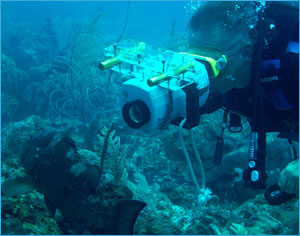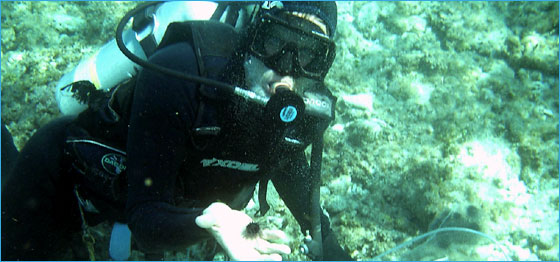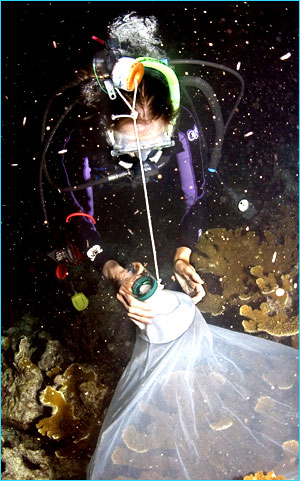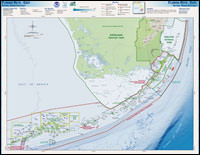 | |||||||||||||||
|
|
|
|
|

Studies Show Increases in Several Fish SpeciesFive years after establishing the sanctuary’s largest no-take area, studies have shown increasing numbers and sizes of commercially and recreationally important fish species and other marine life. Positive changes include increases in size and abundance of black grouper, the gradual recovery of a mutton snapper spawning aggregation decimated by commercial fishing, the recovery of pink shrimp and their habitat, and an increase in the number of large fish inside the reserve as compared to outside. Because the Tortugas region is upstream of the Florida Keys reef tract, improvements in the reserve’s fish populations may help sustain fish stocks in the Keys and further north, as more and larger fish produce larvae that are carried away from the reserve on ocean currents. Adult fish may also move to areas outside the reserve as competition for space increases within. These fish then become available to the fishery, an effect known as spillover. Course to Help Students Understand Their SanctuarySanctuary staff introduced a continuing education course at the Florida Keys Community College in Key West designed to help students learn more about the sanctuary. Guest lecturers gave presentations on topics including Queen conch population enhancement, shipwreck management, coral disease and Everglades restoration. After six weeks of lectures, the class ended with a snorkeling trip to the coral reef. The course was free, except for the cost of the field trip. In addition to learning about their sanctuary, the class offered students an opportunity to understand current challenges in managing the coral reef ecosystem. Presenters included staff from both the sanctuary and partner agencies such as the Florida Fish and Wildlife Research Institute. The sanctuary plans to offer the course again in the winter of 2007 in the Upper Keys. Urchins Relocated to Safer GroundSeeking to improve the health of Keys reefs, members of the Florida Keys National Marine Sanctuary Advisory Council led an effort to relocate more than 2,000 juvenile, long-spined black urchins to safer waters before the height of hurricane season. Council members moved the urchins out of the reef rubble zone, where they can be smashed by the strong surge and high waves of passing storms. Long-spined urchins play a critical role in coral reef health by grazing on algae, leaving behind bare rock that is important habitat for juvenile corals. The once abundant urchins underwent a mass die-off throughout the Caribbean during the early 1980s and the population in the Florida Keys has been slow to recover. Many scientists now cite the urchin’s disappearance as a factor in the decline of Caribbean coral reefs. The council members hope that increased numbers of urchins will translate into increased settlement and survival of juvenile corals.
Annual Coral Spawning Event Intrigues ResearchersThe annual coral spawning, the spectacular show put on each summer by some species of hard coral as they strive to reproduce, was the focus of renewed attention in the sanctuary as researchers sought to learn about coral reproduction and survival to find methods to sustain threatened reefs. The sanctuary joined with Mote Marine Laboratory to conduct a ten-day research cruise to observe and document coral spawning in the Looe Key Sanctuary Preservation Area. The team documented eight species of coral spawning and observed the spawning of the newly listed threatened species acropora palmata (elkhorn coral), formerly the primary reef-building coral in the Caribbean. Mote scientists have succeeded in growing juvenile corals in their Summerland Key laboratory from elkhorn spawn collected during the expedition. Scientists hope to be able to learn from these spawning events so they can transplant corals back onto the reefs. Plans for 2007
Sanctuary Atlas MapsNew sanctuary atlas maps depicting physical ocean and land features, other state and federal managed areas and parks, and other basic atlas features are now available on the sanctuary program Web site.
Click here to view print version. (pdf, 508K) |
|
||||||||||
|
|||||||||||||||






